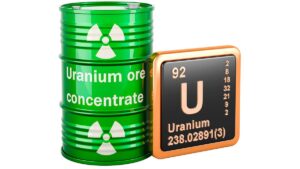China commodity demand expected to ‘hold up well’ for remainder of 2020

With iron ore prices holding at six-year highs, CBA expects Chinese commodity demand to remain elevated through to the end of the year. (Pic: Getty)
China updated markets with its monthly data deluge yesterday, comprised of August figures for industrial production, retail sales and fixed asset investment.
And CBA commodity analyst Vivek Dhar said the data bodes well for ongoing commodity demand from Australia’s biggest export customer.
China’s economy is still the central demand-side driver of bulk commodity prices, as investors weigh the potential impact of additional supply from mining heavyweight Vale in Brazil.
Dhar said China’s industrial production activity rose by 5.6 per cent in June, beating expectations of 5.1 per cent growth.
He noted that within the headline data, growth in steel production eased back slightly in August, from 9.1 per cent to 8.4 per cent in August.
However, a slight decline in production levels for steel and pig iron was somewhat expected, given the strong growth in July.
“While the slowdown suggests that China’s steel demand impulse may be easing, growth rates were still strong enough to see iron ore prices rise to the highest level since January 2014 earlier this month,” Dhar said.
He added that higher numbers for domestic coal production mean the restrictions on coal imports are likely to remain in place. While production in China’s downstream sectors — such as mobile phones, integrated circuits and robotics — also picked up in August.
Looking ahead, Dhar said ongoing government support for infrastructure investment will help support Chinese commodity demand through to the end of the year.
CBA estimates that local governments are around three-quarters of the way through a centrally-funded stimulus plan, which has primarily been focused on infrastructure development.
On that front, the Ministry of Finance has ordered that municipal governments issue the remainder of their bond quota by the end of August — a move which is expected to bolster approvals for near-term infrastructure projects.
Related Topics
UNLOCK INSIGHTS
Discover the untold stories of emerging ASX stocks.
Daily news and expert analysis, it's free to subscribe.
By proceeding, you confirm you understand that we handle personal information in accordance with our Privacy Policy.








